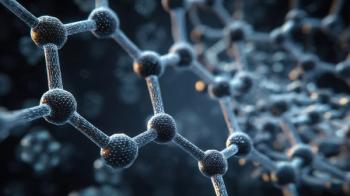
MS–Based Label-Free High-Throughput Bioanalysis for Drug Discovery (Symposium)
This symposium on drug discovery is organized by Sammy Datwani, and will be held in Room 117 from 1:30 to 4:45 pm.
This symposium on drug discovery is organized by Sammy Datwani, and will be held in Room 117 from 1:30 to 4:45 pm. In this symposium, recent advances of mass spectrometry (MS)–based label-free high-throughput screening techniques for drug discovery are discussed, with high specificity, high sensitivity, and high throughput similar to conventional plate-readers approaches based on spectroscopic technologies.
The first paper of the symposium is by Erin S Baker and James N Dodds of North Carolina State University. They present at 1:35 pm on “High Throughput Analysis in Drug Discovery: Utilizing Rapid Diagnostics with Ion Mobility-Mass Spectrometry.” This paper details the interface of high throughput sampling using a high-throughput MS system with a commercially available uniform field ion mobility-mass spectrometer for rapid diagnostic screening.
The second paper of this symposium is presented by Milan Mrksich of Northwestern University. The 2:10 pm paper is titled, “High Throughput Experiments with SAMDI Mass Spectrometry.” This talk describes the use of carbohydrate arrays to discover novel enzymes, the preparation of peptide arrays to profile the enzyme activities in cell lysates, and high-throughput screening to discover novel reactions and small molecular modulators.
The third symposium talk is entitled, “Application of Acoustic Mist Ionization Mass Spectrometry for Metabolic Profiling,” and is presented at 2:45 pm by Jonathan Wingfield of AstraZeneca. This paper details the use of acoustic mist ionization mass spectrometry (AMI-MS) hyphenated with a time of flight (TOF) mass detector, while utilizing an acoustic sampling interface for processing greater than 100,000 samples per day.
The fourth paper of this symposium, to be delivered At 3:35 pm, is from Arseniy Belov, Roland Annan, Melanie Leveridge, and Guofeng Zhang of GlaxoSmithKline; and Sammy S Datwani and Luke Ghislain of Labcyte. Their paper is titled, “Utility of a Novel Acoustic Mist Ionization Mass Spectrometry-Based Interface in Early Drug Discovery: Delivery of a Preliminary Screen.” This paper demonstrates that AMI-MS has the potential to be the next-generation interface for high-throughput screening (HTS) applications, replacing many non-MS-based technologies for early drug discovery in the future.
The final presentation of this symposium is from, Wenyi Hua and Hui Zhang of Pfizer Inc.; Sammy S Datwani, and Luke Ghislain of Labcyte; and Tom Covey and Chang Liu of Sciex, on “Label-Free High-Throughput ESI-MS Enabled by the Acoustic Droplet Ejection to the Open-Probe Probe Sampling Interface.” This 4:10 pm talk describes the coupling of acoustic droplet ejection (ADE) and a standard electrospray ionization (ESI) ion source for a mass spectrometer, with an open-port probe (OPP) sampling interface for high throughput screening (HTS); this completes a novel label-free liquid chromatography–mass spectrometry (LC–MS) system.
Newsletter
Join the global community of analytical scientists who trust LCGC for insights on the latest techniques, trends, and expert solutions in chromatography.




